Day 8: August 9th
Although the driving wasn’t as gruelling as the previous day, it still demanded constant focus and concentration. Each time a vehicle passed or approached, it kicked up a cloud of dust that obscured the road. Potholes were hard to spot, and some sections were slippery. Parts of the highway were paved with hard rocks, while others were bumpy, making the drive challenging.
As we entered the Arctic Circle, we noticed that the pine trees gradually grew smaller, eventually giving way to a treeless landscape. The vastness of the tundra stretched out before us as we continued our journey.
By the time we arrived in Inuvik, it was late in the evening. Although it was still daylight, the sky was overcast. We stopped at The Rooster, a small restaurant offering a variety of dishes like chicken wings, pizza, pasta, salad, poutine, and burritos. We ordered a shawarma dish that came with sauce, hummus, salad, and fries. It cost $40, but the portion was more than enough for both of us.
However, during the last few hours of our drive, our car started making an unsettling noise, and we began to worry. With a long journey still ahead of us, we needed the car in good condition. It was already after 8 p.m., and the chances of finding a mechanic were slim. We went to a repair shop only to find it closed, despite their posted hours. On our way back to the campground, we noticed a sign for a “Midnight Mechanic” surrounded by a forest of scrap vehicles, and saw the “open” sign still lit. We decided to take a chance.
We entered a small, dimly lit office cluttered with car parts scattered everywhere. Two bulldogs greeted us, followed by a man in his seventies sitting at a desk. He wore a t-shirt with the words “What does it sound like? It’s not my problem,” and was casually smoking weed. At first, he seemed uninterested in our car trouble. However, after seeing how his dogs had taken a liking to us, he agreed to check out our car. After a quick inspection, he assured us that the noise was probably just the result of a pebble or dust caught somewhere and wasn’t a serious issue.
We ended up having a pleasant chat with him, and despite his refusal to take any money, we insisted on paying him something as a gesture of our appreciation. His expertise and assurance were worth it. Before we left, he advised us not to drive on the shoulders of the road during our trip to Tuktoyaktuk and back. He even gave us a lighter with his phone number imprinted on it, just in case.
Feeling relieved and satisfied with how the day had turned out, we finished our evening with a glass of wine before heading to bed.
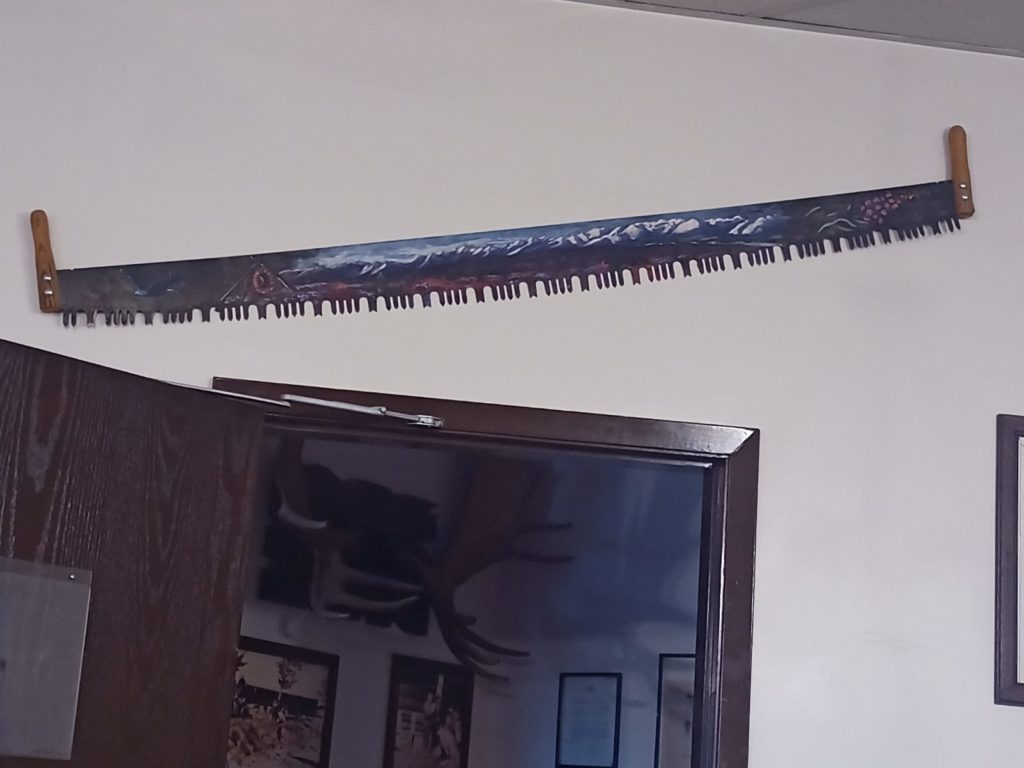

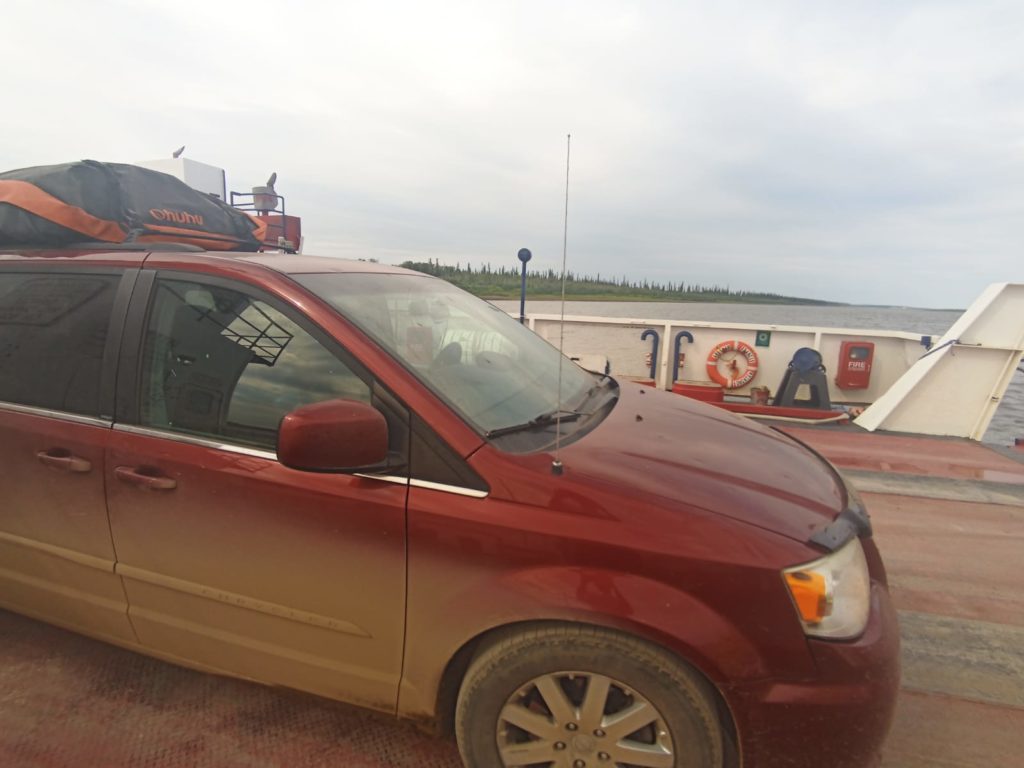
Day 9: August 10th
The campground had new, clean washrooms and warm showers, making for a comfortable start to our final leg toward Tuktoyaktuk. A light rain had fallen through the night, leaving the road wet and reducing the dust that had been caking our car. The potholes were now filled with water, making them easier to spot than on the dusty, pothole-ridden roads we had driven on before. We kept reminding ourselves of the Midnight Mechanic’s advice: avoid driving on the shoulder. As we drove, the landscape transformed—the pine trees shrank and eventually disappeared, replaced by a scattering of small lakes.
Now and then, we pulled over to let vehicles pass. At one point, an RV stopped alongside us, and the driver asked if we needed help. We assured him that we didn’t need help and drove on. When we passed two cyclists, we were careful not to splash them with the muddy water. On this road, our priorities were clear: keep ourselves safe, avoid getting stuck, and prevent any car breakdowns. We drove slowly and cautiously.
Hours later, we encountered some Inuit hunters who had just bagged a moose. Their warm welcome set a positive tone as we neared Tuktoyaktuk. The first sight that greeted us was the Pingos, the ice-cored hills that are the town’s landmarks. But as we approached the town itself, the picture changed rapidly. Giant oil tanks and an administrative building dominated one side of the road, while a scrap metal dumping station with a giant eagle perched atop caught our attention.
We headed to the visitor center, where the staff provided us with maps and camping permits for $30. They also directed us to a spot where we could find local food. To our surprise, the place turned out to be the village community hall, bustling with activity for the annual celebration. We had arrived on a special day. The entire village seemed to be gathered there, enjoying local fish specialties, burgers, sausages, vegetables, fruits, and coffee. The local sub-division president was giving an interview to a CBC crew as we entered. Kids played nearby, and there were games, prizes that included free T-shirts and sweaters.
We struck up a conversation with an Indigenous woman in her late twenties who was there with her child. She spoke about the challenges of maintaining their traditional way of life while dealing with the pressures of the modern economy. Many people in the community can no longer live as hunters and fishers as they must rely on outside supplies. This often forces them to leave their homes to earn money. She wanted to live as her mother and grandmother did. Her grandmother had been educated in a residential school but afterwards returned to her traditional way of life. Her grandmother had preserved their way of life and passed it on. The woman admitted she had no easy answers for how to sustain their traditions while navigating the financial demands of the outside world.
After participating in some games and enjoying the festivities, we made our way to the campground, located right on the shore of the Arctic Ocean. We encountered a lively group of young people dancing by the ocean, and several campers walked their dogs, stopping for a chat. Some had driven all the way from the U.S., including a woman from Sacramento with two dogs and a couple from Michigan. Others had come from British Columbia, like a man with a beautiful sheepdog who seemed to enjoy our company, and a Chinese father and his young son who pitched their tent beside our car.
We took a walk down to the ocean to dip our feet in the water. It was clean and soothing, and the horizon seemed to blend into the sky in a magical way. The sun was still high, as it wouldn’t set until after midnight. The area is reserved for fishing by the village community, so swimming is prohibited. We noticed a big white fish close to the shore, trapped in a net. A couple soon appeared to collect the fish, pulling twelve from the net. They began preparing the fish on two small tables, and when I asked if I could watch, they offered to let me help. After a hands-on lesson in cutting and preparing whitefish, I was “awarded” the fish I had helped prepare.
We took our fish back to camp and cooked it for dinner, offering a portion to our Chinese neighbours. As we sat down to eat our meal, seasoned with butter, onions, garlic, salt, pepper, and Jaffna curry powder from a Sri Lankan Tamil grocery store in Toronto, the boy from next door came over with two pop cans labelled “Arctic Ocean” in Chinese. It was a surreal moment: a German and Sri Lankan couple, sitting by the Arctic Ocean, eating freshly caught fish caught by an Inuit couple, prepared with South Asian spices, and drinking Chinese pop.
Afterward, we returned to the couple who had taught me to prepare the fish to thank them. We ended up talking for hours. They shared stories of life in Tuktoyaktuk, including a tale of encountering a grizzly bear on the highway and how they once warned a cyclist of the approaching danger. Another time, they saw a man enter the village using a non-electric scooter. It was reassuring to know that our adventure, while challenging, wasn’t as extreme as some they had witnessed.
His wife pointed us to a spot where we might see beluga whales, indicating that seagulls often follow them. She also mentioned that a polar bear had been seen in the area just three days earlier, attracted by the fish and animal remains. As we walked back to our campsite, the seagulls were everywhere, trying to scavenge the fish remnants.
The sun was still bright, and we had plenty of time before it would set. We revealed our plan to take a photo of a Sri Lankan Tamil eating rice and curry while wearing traditional South Asian attire in front of the Arctic Ocean. The couple assured us that we would be the first to take such a picture.
We spent the rest of the evening watching the Arctic Ocean as the sun slowly dipped toward the horizon. The clouds shifted patterns, and the gentle waves lapped against the rocks, creating a peaceful lullaby. The day felt perfect, and the place seemed magical. As we went to bed, the two cyclists we had passed earlier arrived at the campground, bringing the day full circle.
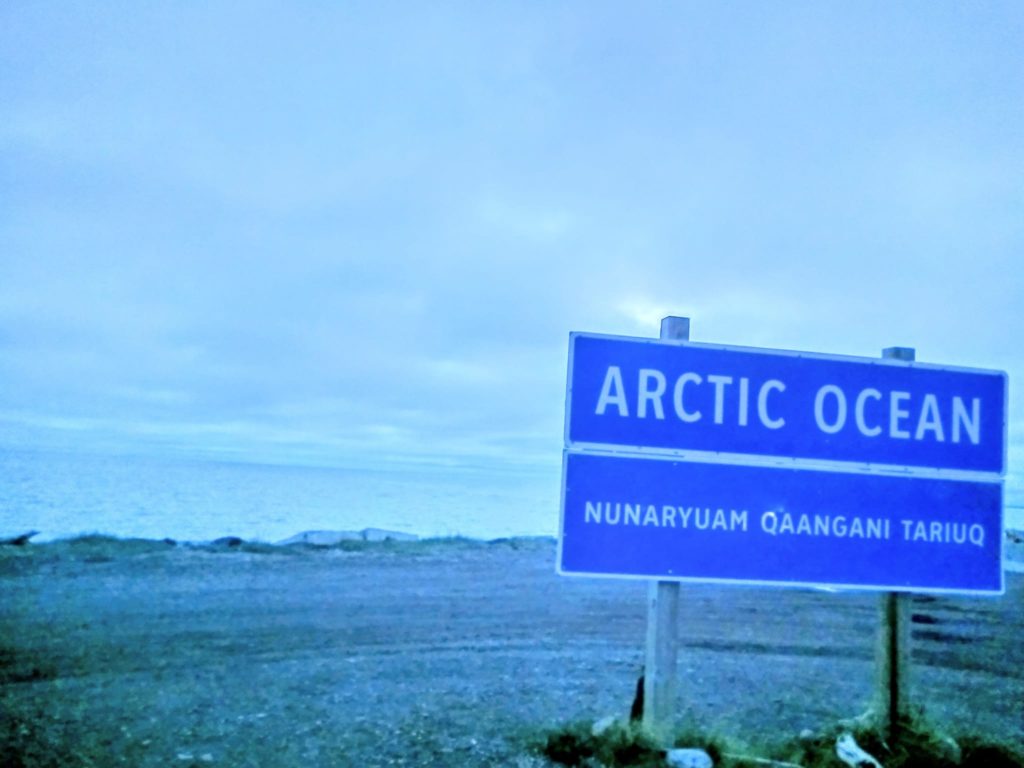

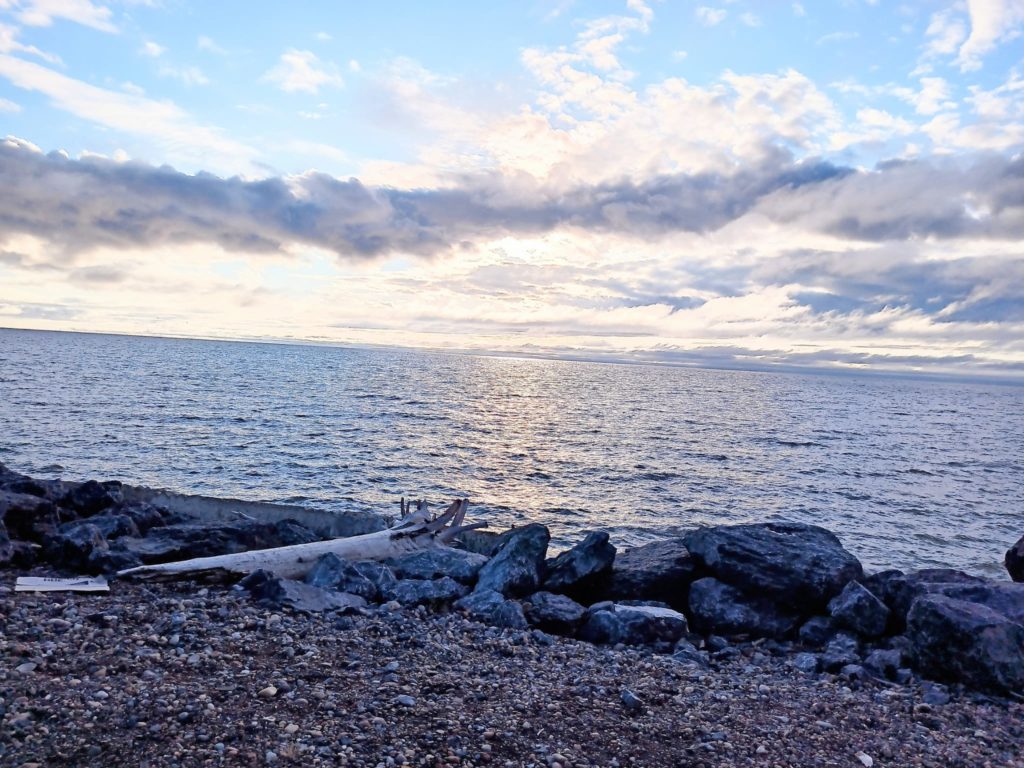
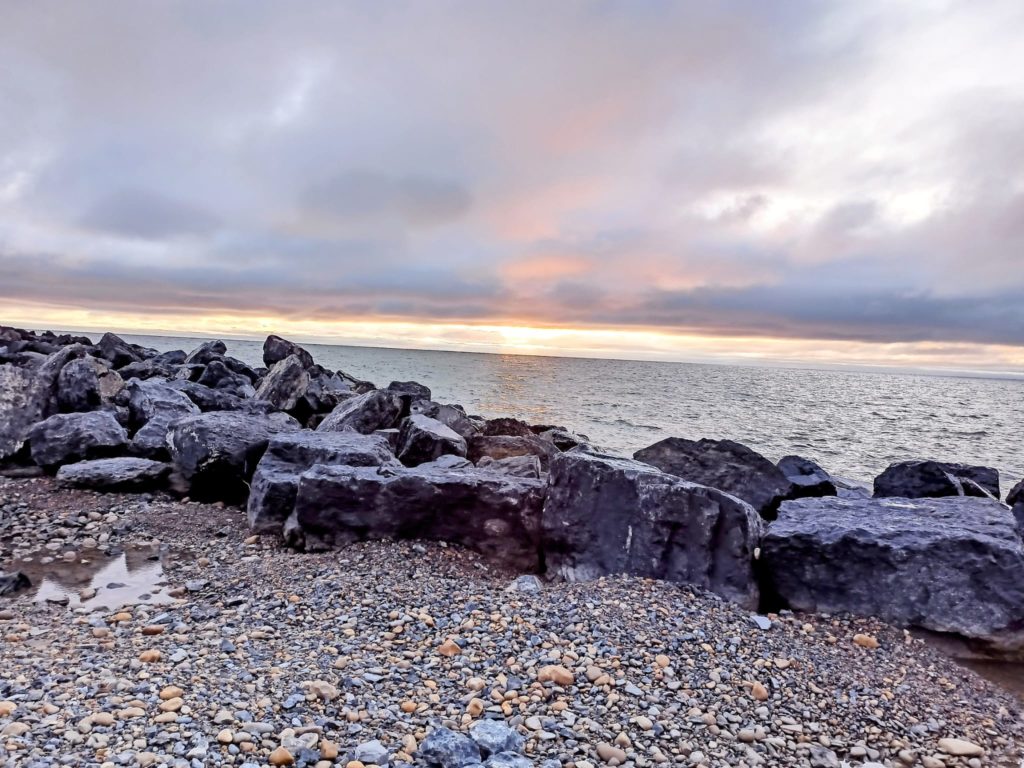

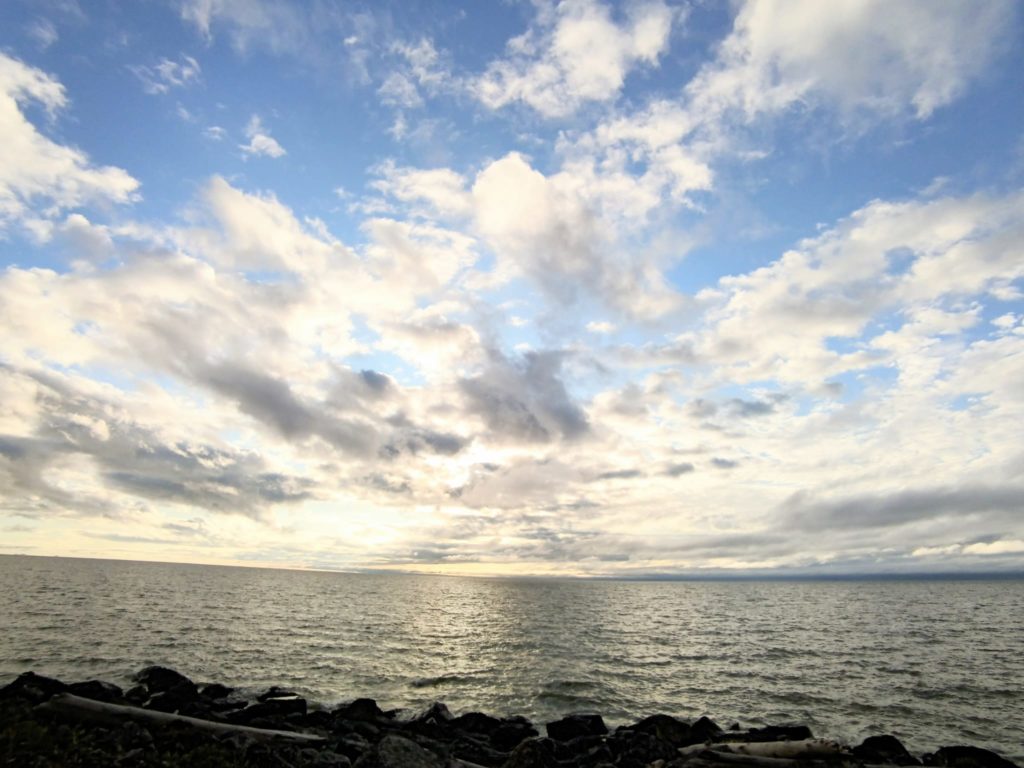

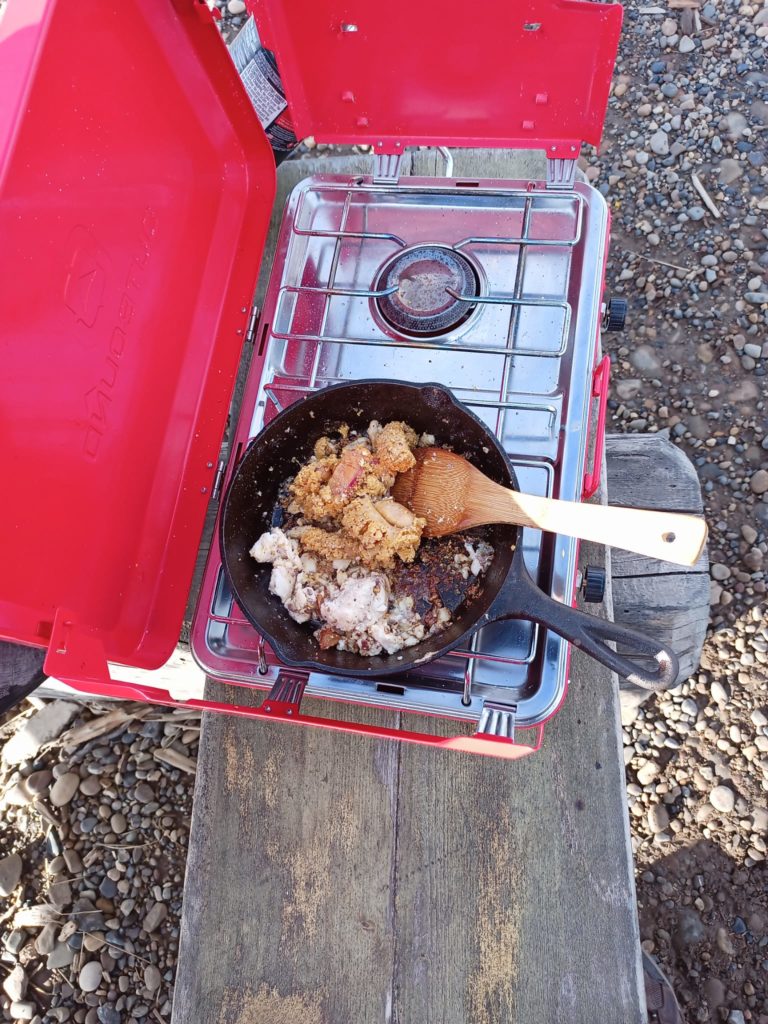
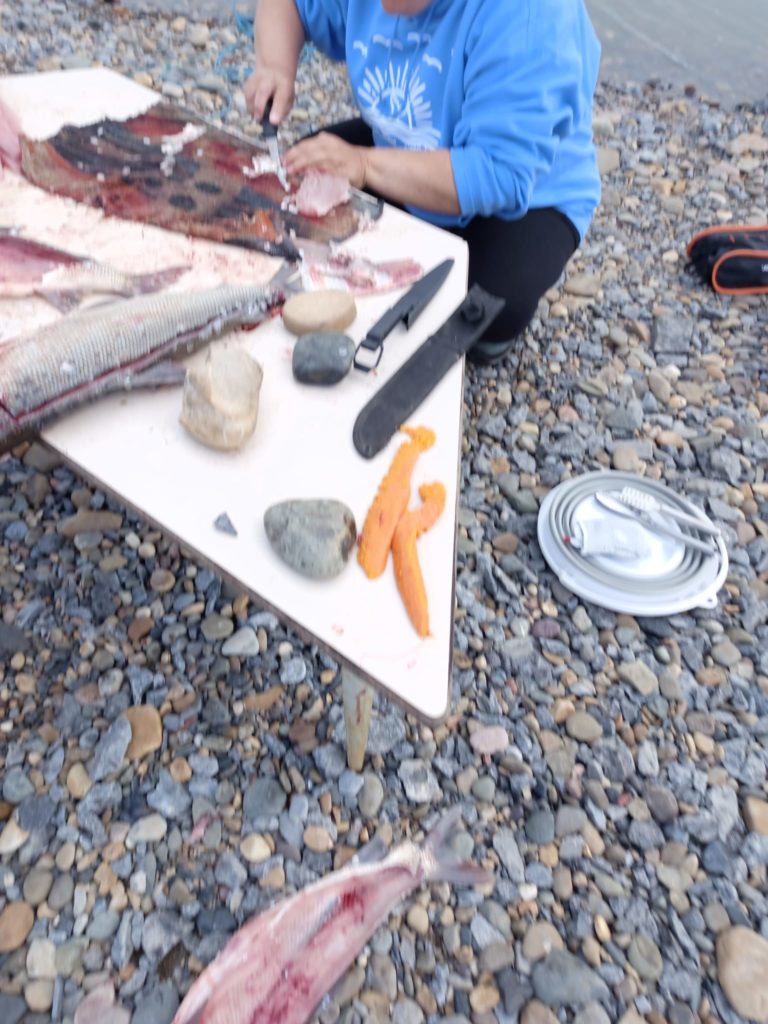
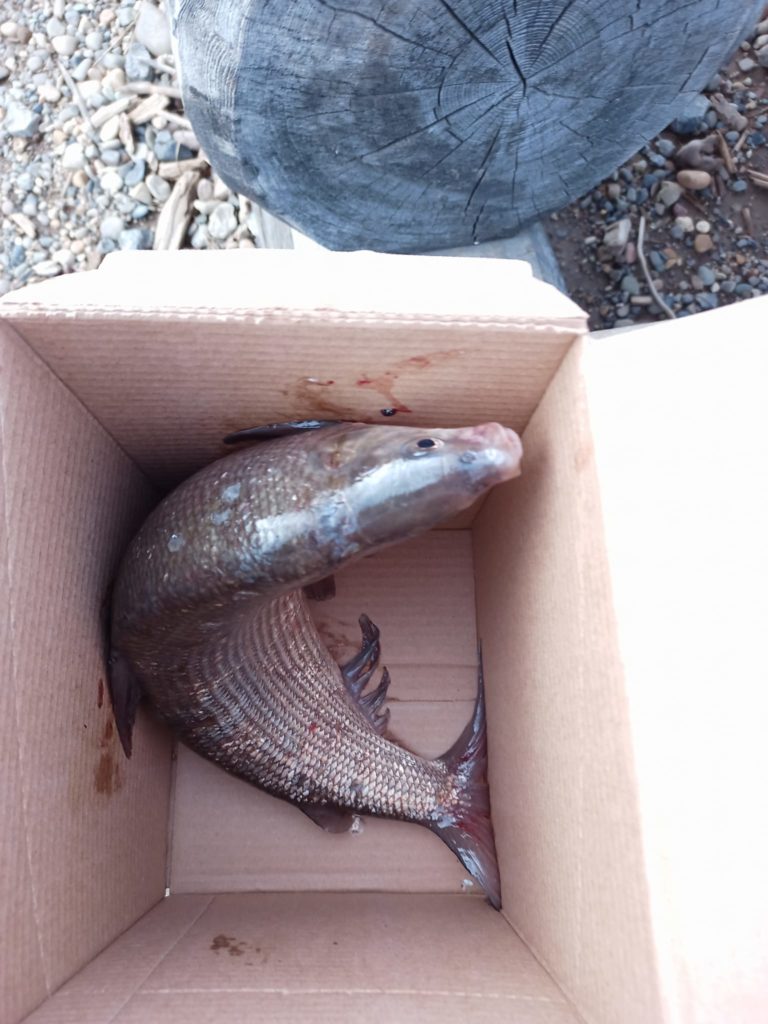
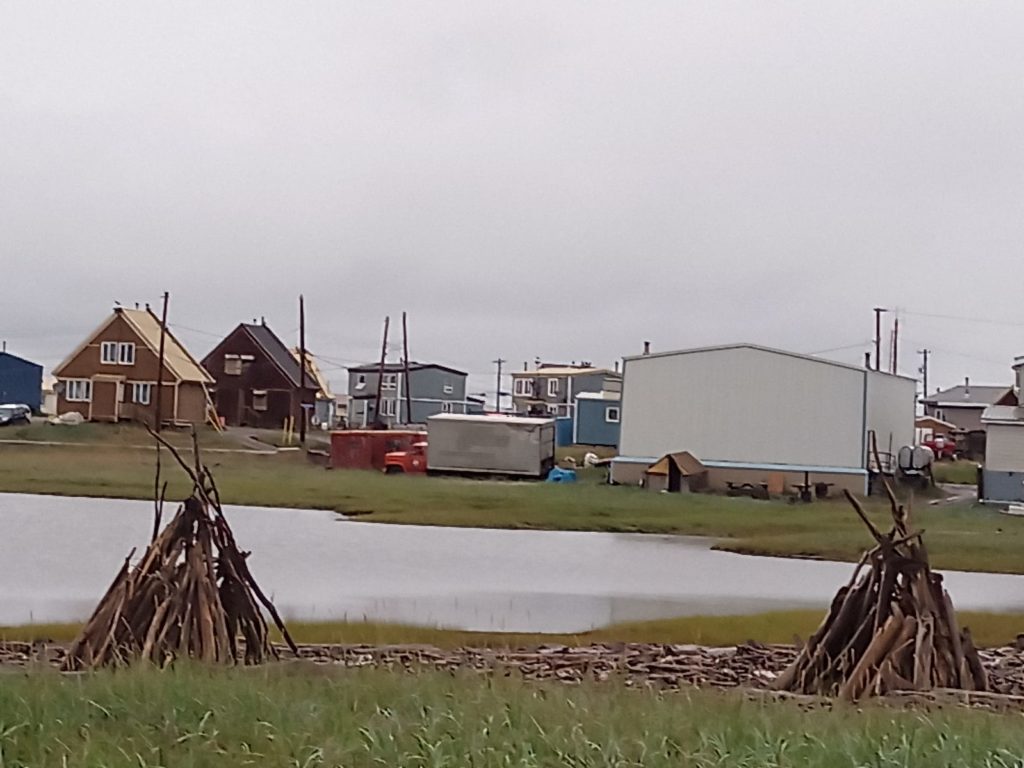
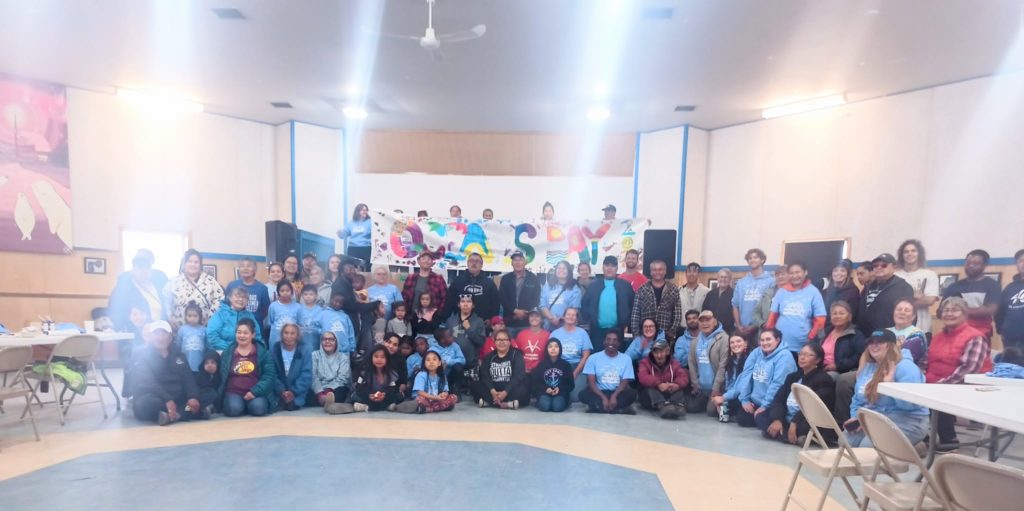
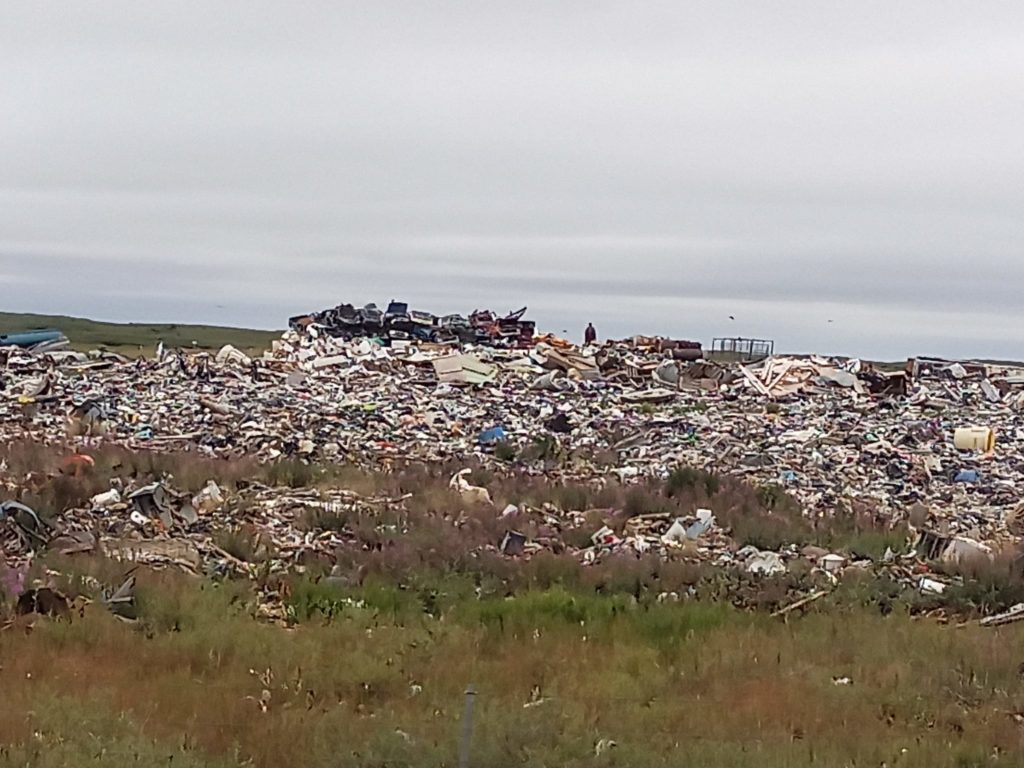
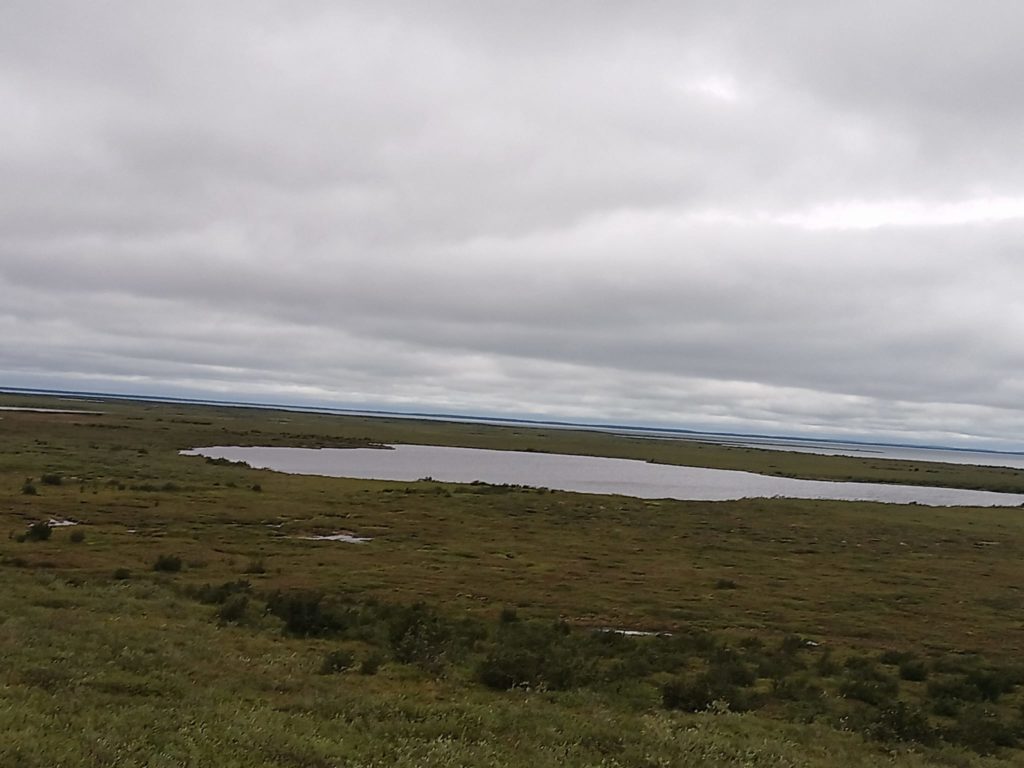
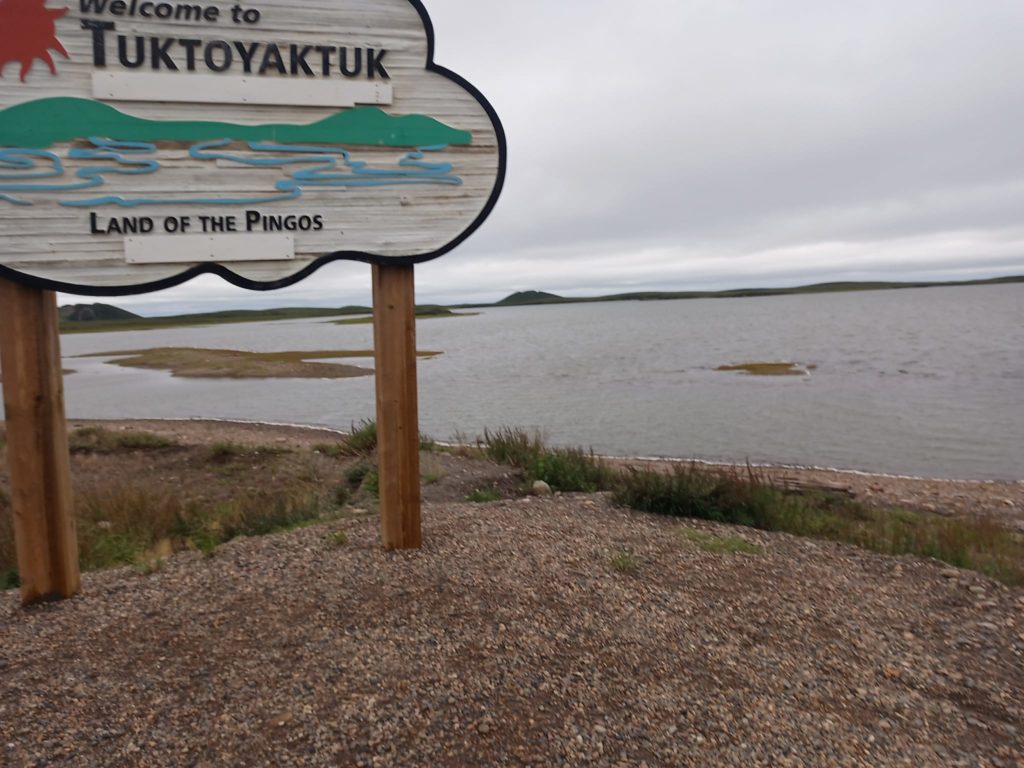
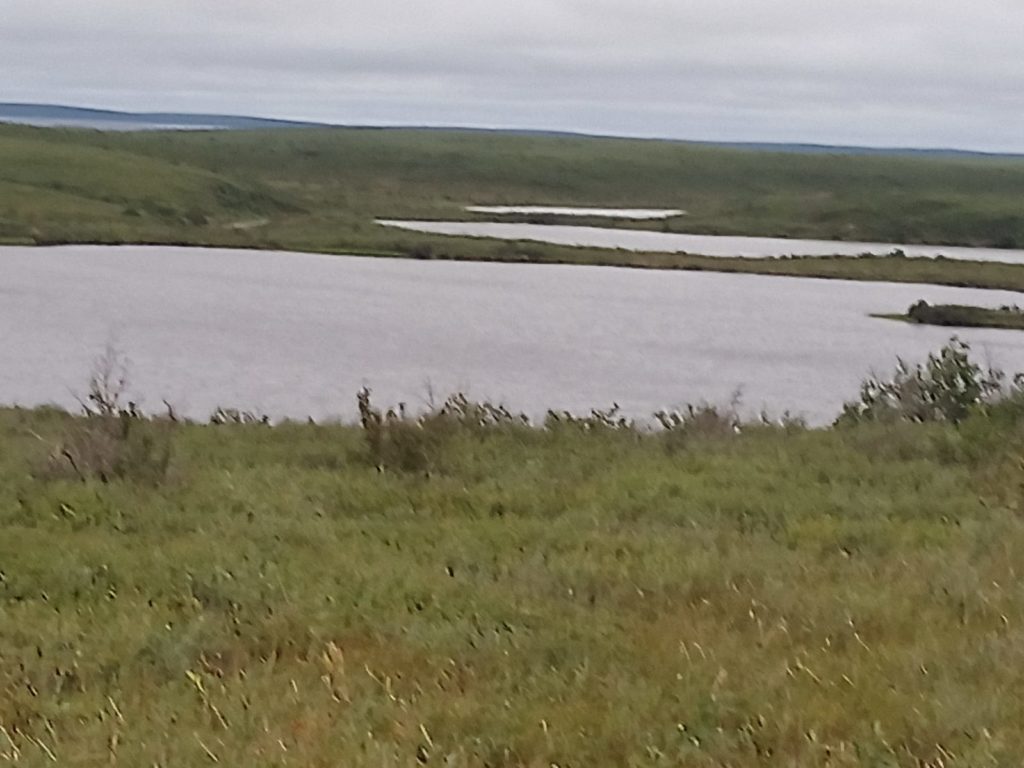

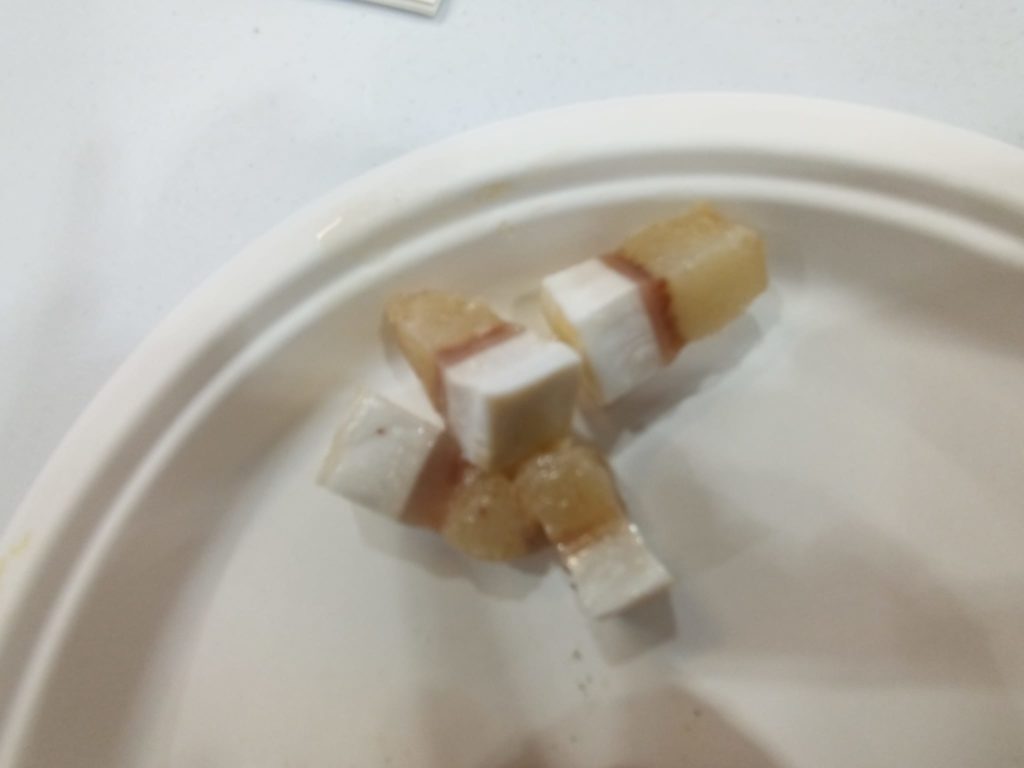
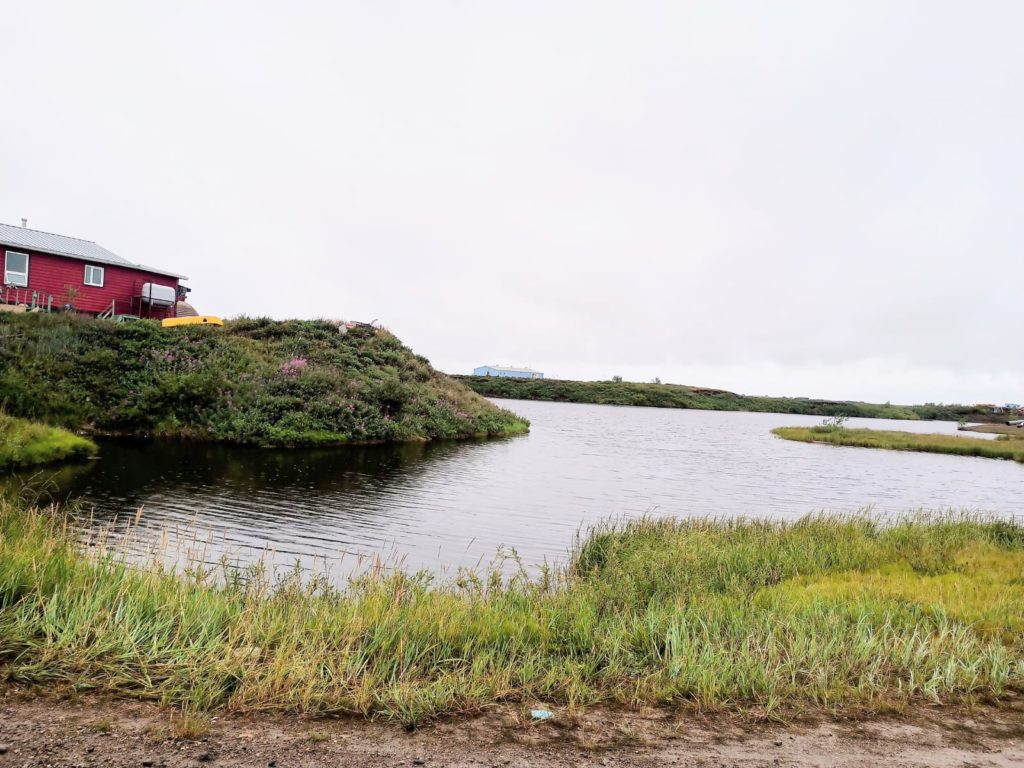
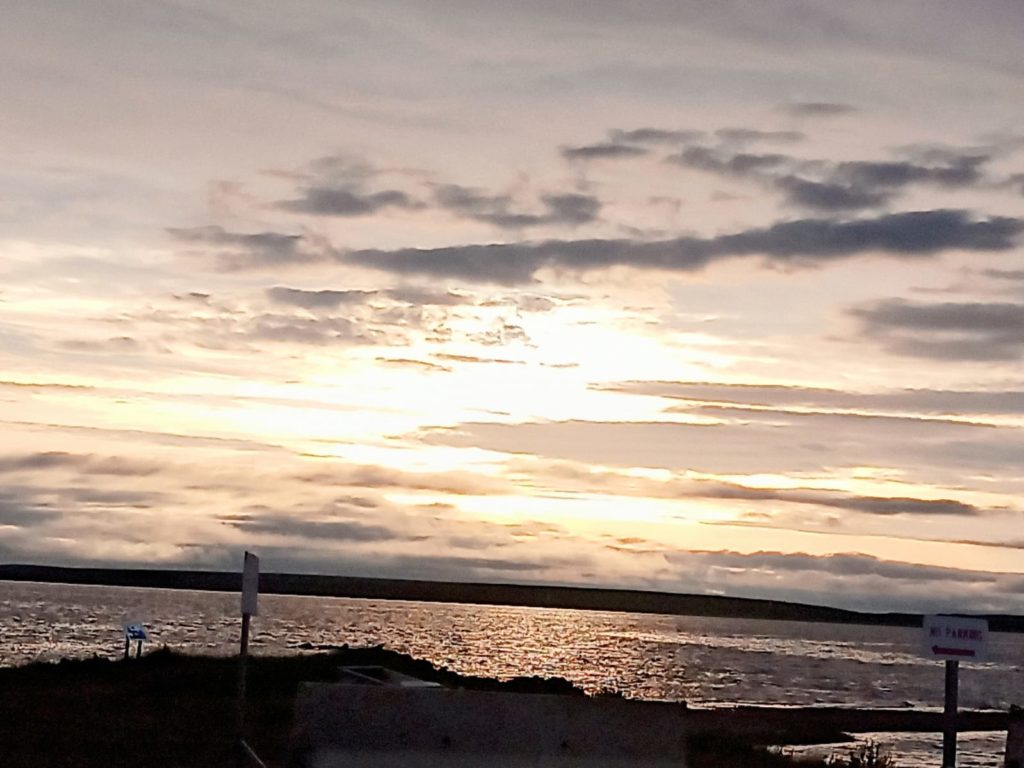
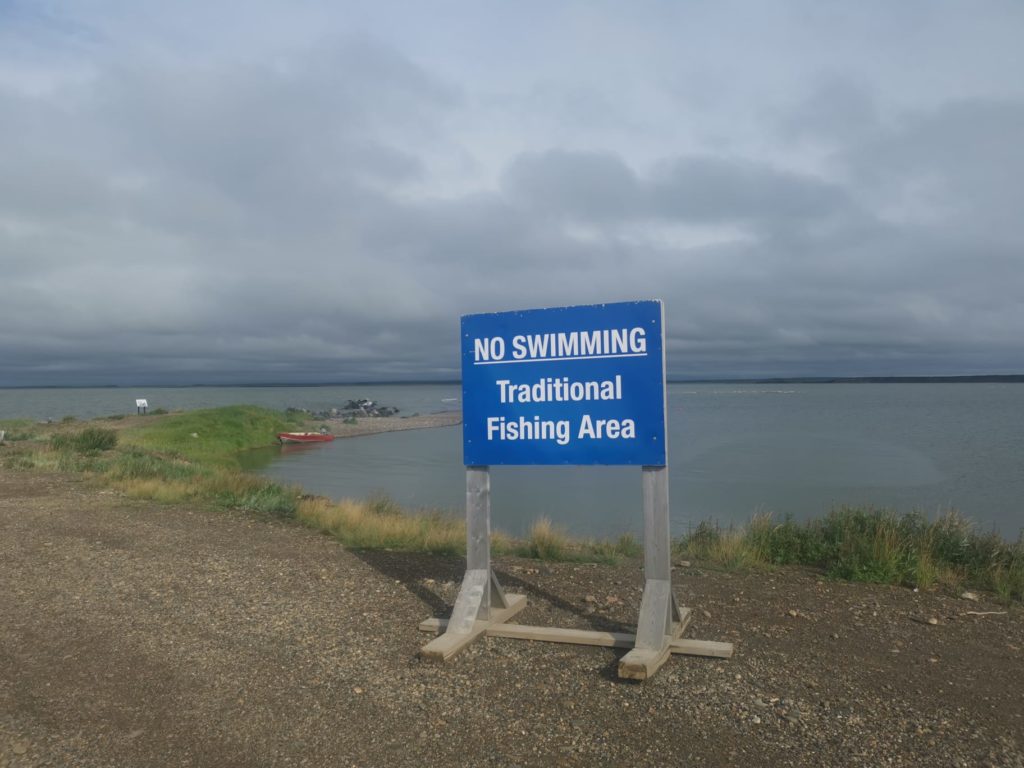
Day 10: August 11th
The sun was already up, shining through dark clouds when we woke. Within minutes, rain began to fall. We headed to a big wooden tent with a long bench in the middle, where we made coffee and breakfast. The two cyclists we had met earlier were there, preparing their own breakfast. Many campers, including our Chinese neighbours, had already left. The weather was windy, cold, and wet. As we sat in the tent, a tourist woman in a bathing suit passed by, inquiring about a swimming area—a strange sight given the chilly conditions.
The cyclists shared stories of their journey, having biked from Dawson City over the last few days. They planned to hitchhike back to Inuvik and then fly to Dawson City to retrieve their car. They had cycled across Canada, the U.S., and Mexico, meticulously planning each trip to achieve their adventurous goals. One of them, an engineer, recounted an experience of running out of water while riding through a desert, forcing him to cover 50 kilometres without hydration. The other, a construction and design company owner, reflected on how real-life problems seem small compared to the challenges faced during their adventures. They were always prepared to push themselves past their limits to achieve more.
After they left, we warmed up our meal of basmati rice layered with potato, lentils, and pumpkin curries, all of which we had canned in airtight jars. As we ate, a young YouTuber asked if he could set up his camera in the tent to interview a local villager about life in this remote place. New tourists were arriving, but the charm of the place and the warmth of its people had us contemplating an extended stay.
Despite having only spent a day in Tuktoyaktuk, we felt overwhelmed by the quietness of the place and the kindness of the community. Apart from paying for the campground, we hadn’t spent any money here. Meals, entertainment, and a warm welcome were all freely given. However, we also noticed the downside of tourism—campsites littered with trash left behind by visitors. The weather forecast predicted rain for the entire day and the next morning. With heavy hearts, we decided to leave Tuktoyaktuk.
As we drove out of the village, we passed the scrap metal dumping ground and the oil tanks that marred the otherwise beautiful Arctic landscape. We stopped at the entrance to the village to say goodbye, taking pictures of the Pingos before heading back onto the Dempster Highway. The return journey felt easier; the rain made the potholes visible, and we were familiar with the road’s quirks. Yet, the thought of leaving so soon weighed on us. I longed to stay longer, to learn more about fishing, hunting, and the traditional way of life in this unique community.
Tuktoyaktuk’s villagers know each other by name and take care of one another like a big family. They are adept at living under the harsh environmental conditions, but they also face numerous challenges. Despite some subsidized utilities, they have mortgages, car loans, and children to care for. Many are forced to leave their community to find work, learning skills irrelevant to their traditions just to make a living. This tension between preserving their cultural heritage and adapting to the demands of modern life creates a deep rift within families and the community. Some children no longer learn their mother tongue, and not everyone wants to leave the community for city life.
I couldn’t help but wonder what it would take for the territory or federal government to support these communities better. Why should this lovely village have a scrap metal dumping ground, a remnant of oil exploration from the 1970s and ’80s? The Queen herself had visited the place for the opening ceremony, yet years later, the industry shut down, leaving behind a mess. The companies responsible were paid to remove the oil tanks and scrap metal but didn’t follow through because it was too expensive. I imagined the outrage if something similar happened in a place like Beverly Hills—was this neglect simply because the people here lacked the power to defend their rights?
I also thought about the lack of services for tourists, which might encourage them to stay longer and engage more deeply with the villagers, rather than just taking pictures and leaving. The locals deserve better than having their home treated as a disposable destination.
When we arrived in Inuvik, it was already evening. Knowing the ferry operations at McKinsey River and Peel River ran until 11:30 pm, we decided not to risk driving further and chose to stay in Inuvik for the night. We found a campsite with a view over the valley and river in Jak Campground, where we were greeted by a friendly husky from our neighbours. The dog’s name was Sunny, and her owner proudly told us that Sunny’s mother had participated in the 1,000-mile Alaskan race.
Sunny’s owner invited us to join them at their fire pit. He had Ukrainian and French ancestors who were homesteaders in Alberta two generations ago. They had been given a quarter square mile of land upon their arrival in Alberta, where they built many houses and made a fortune. His wife, an Inuit registered nurse working in palliative care, had a Christian name for those who couldn’t pronounce her Inuit name. She also had Portuguese ancestry from whalers who had come to the region long ago. She shared with us a wealth of knowledge about the history, heritage, and geography of the area and even gave us books on the Inuit language and the region’s plants. We went to bed that night, overwhelmed by her kindness and the richness of the day’s experiences.





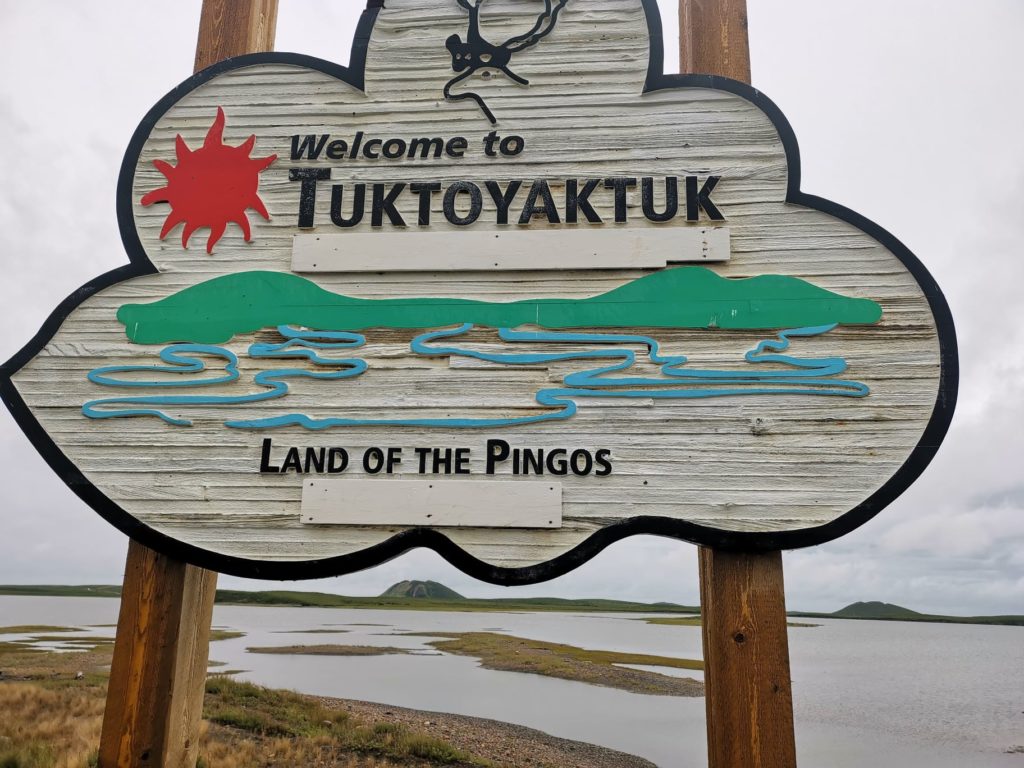
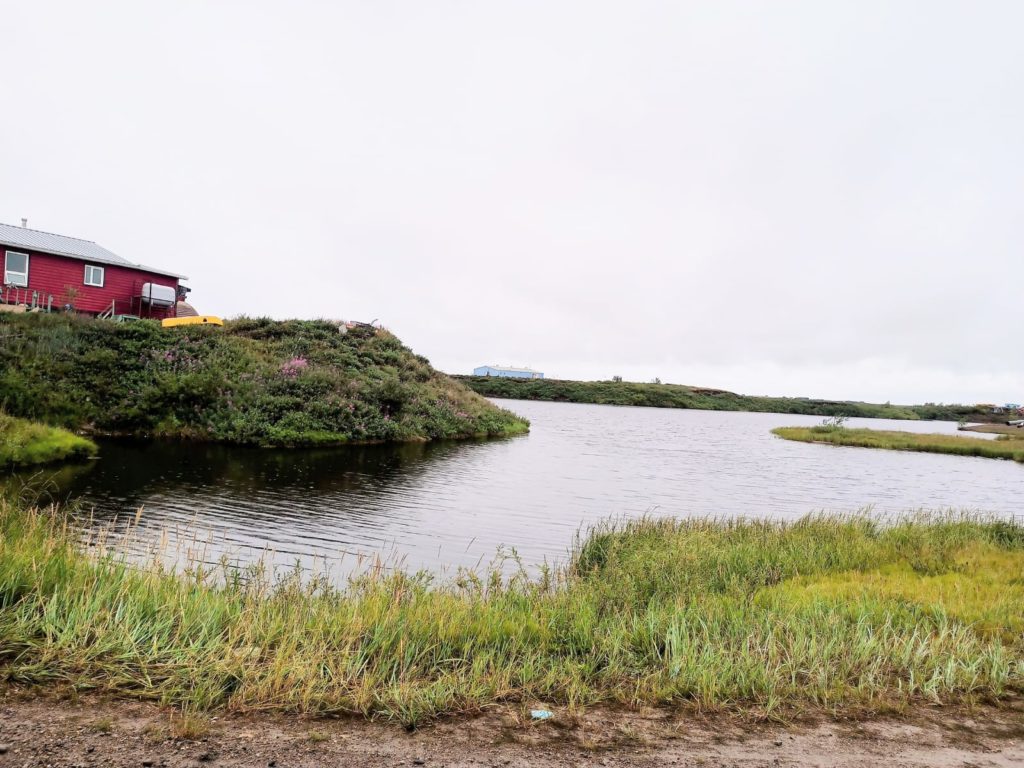

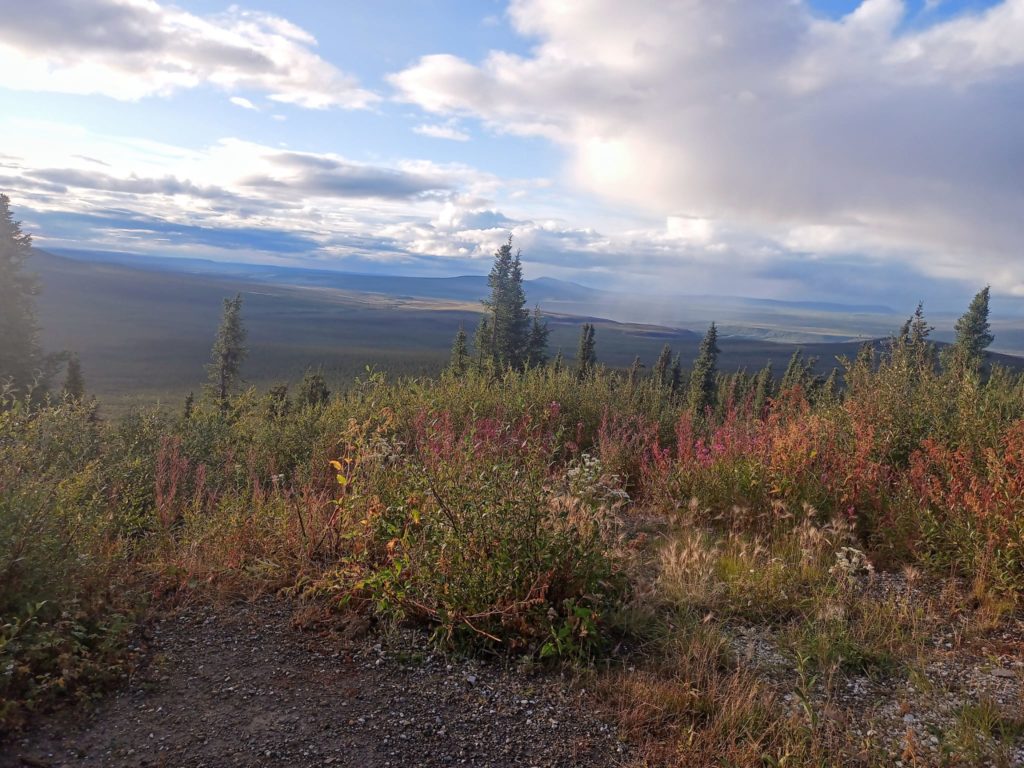
Day 11: August 12th
A road trip on the Dempster Highway without car issues almost seems too good to be true, and our journey was no exception. As we made our way back to Eagle Plains from Inuvik, a persistent and annoying noise began to emanate from the rear wheel—this time, from the left side. We suspected it was caused by a rock lodged in the wheel, but as we drove further, the noise grew louder, filling us with growing anxiety. Upon inspection, we discovered that the brake dust shield was rubbing against the wheel, likely a result of the relentless, bumpy, and rocky gravel road.
Despite this setback, we continued driving slowly, trying to focus on the stunning beauty around us. The landscape moved at a leisurely pace with us, reminding us of the cyclists we had met earlier. They had mentioned how they could savour the scenery longer than someone speeding by in a car. Inspired by this, we stopped frequently to breathe in the fresh air and fully immerse ourselves in the breathtaking surroundings.
Our initial plan was to stop at Eagle Plains for gas and then drive further to spend a day or two exploring the beautiful plains, valleys, rivers, and mountains. However, that plan seemed in jeopardy when the malfunction indicator light illuminated on our dashboard, signalling that our car needed attention.
Upon arriving at Eagle Plains, we sought help at the service shop located at the gas station, which also housed a tire shop. The gas station man said that only the tire shop could help us with our car troubles. Unfortunately, the tire shop was already closed, and we had no choice but to spend the night in Eagle Plains.
We headed to the hotel bar, hoping to book a campsite and enjoy some drinks. It was the same spot where we had shared a lively conversation with truck drivers just a few days earlier. However, the bar and restaurant were closing early due to the bartender’s birthday. He kindly offered to sell us some beer, so we purchased four cans of Yukon Red and made our way to the campsite where we had stayed previously.
The sun was still high in the sky, casting its rays through the clouds and creating a magical interplay of light and shadow on the Richardson Mountains. We set up our chairs, cracked open our beers, and settled in a spot away from the facility to soak in the serenity.
As we enjoyed the peaceful evening, a man in his early sixties with short white hair and a trimmed beard approached us. We recognized him from the Inuvik campground; he had also been at the community hall in Tuktoyaktuk during our visit. He was from Munich and had been travelling for three months, journeying from Nova Scotia in his Jeep, which he had shipped from Germany. We shared our experiences in Tuktoyaktuk and found that we had many similar thoughts and feelings. We spent the rest of the evening together, discussing a wide range of topics. As the temperature dropped, we moved our conversation to the hotel lobby, which also offered free Wi-Fi.
When we returned our chairs to the car, we ran into the American traveller with the sheepdog again. It was the third time we’d crossed paths—first in Eagle Plains, then in Tuktoyaktuk. He had a hole in his windshield, which he had patched with a repair kit. The German traveller joined us, revealing that his windshield also had a crack. We used some tuck tape to secure it from both the inside and outside, hoping it would hold until he could get a replacement. The realization that we were only halfway through the Dempster Highway, with more rocky terrain ahead, made us uneasy. However, we were determined not to let these concerns overshadow our enjoyment of the day, so we headed to the hotel lobby together.
Our new friend from Munich had taken early retirement to fulfill his lifelong dream of traveling to the Arctic and Antarctic. This dream had been with him since his mid-twenties. After losing a close family member at a young age, he had taken a year off in his thirties to backpack through India. He had saved this special trip for his retirement. He had worked for one of Germany’s largest corporations and had served as an elected workers’ representative, sitting on the board of directors with voting power. He explained to us how the Betriebsrat, a body within German companies that represents employees’ interests, operates, and the power and limitations it holds. He had been documenting his travel experiences on Polarsteps and shared his blog with us. We also discussed how some Germans were contemplating leaving Germany for Canada due to the ongoing war in Europe, as well as the opportunities and challenges that immigrants face.
As the night wore on and darkness finally fell after midnight, we decided it was time to call it a day and went to bed, grateful for the unexpected connections and the experiences that this rugged journey continued to bring our way.

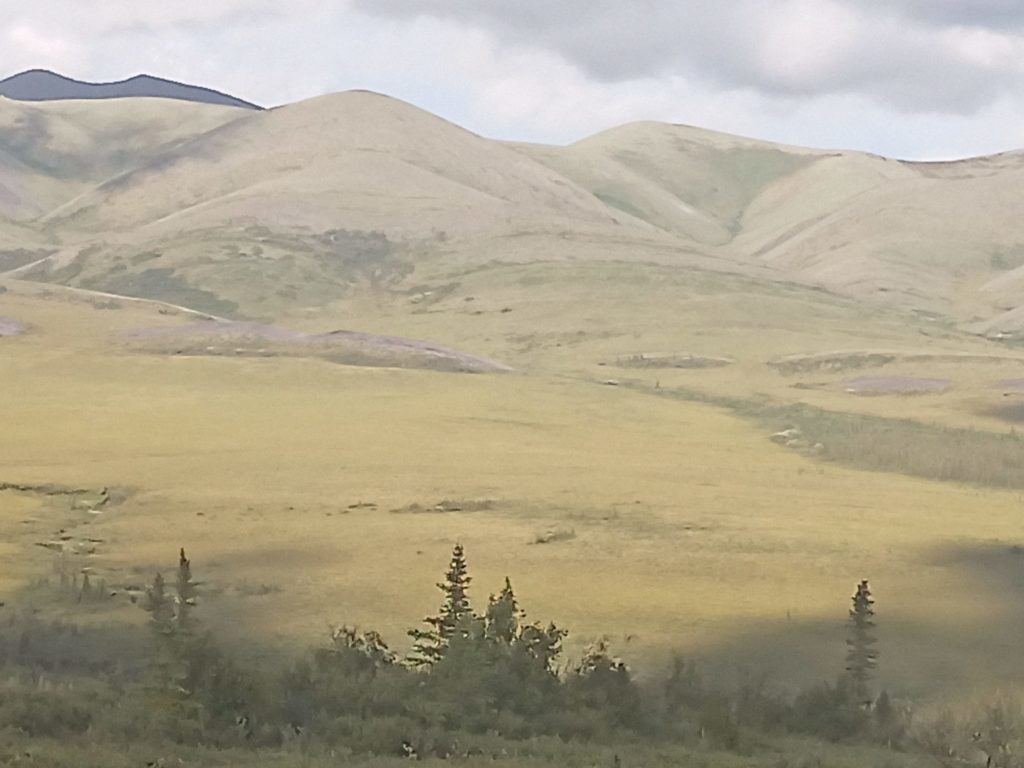
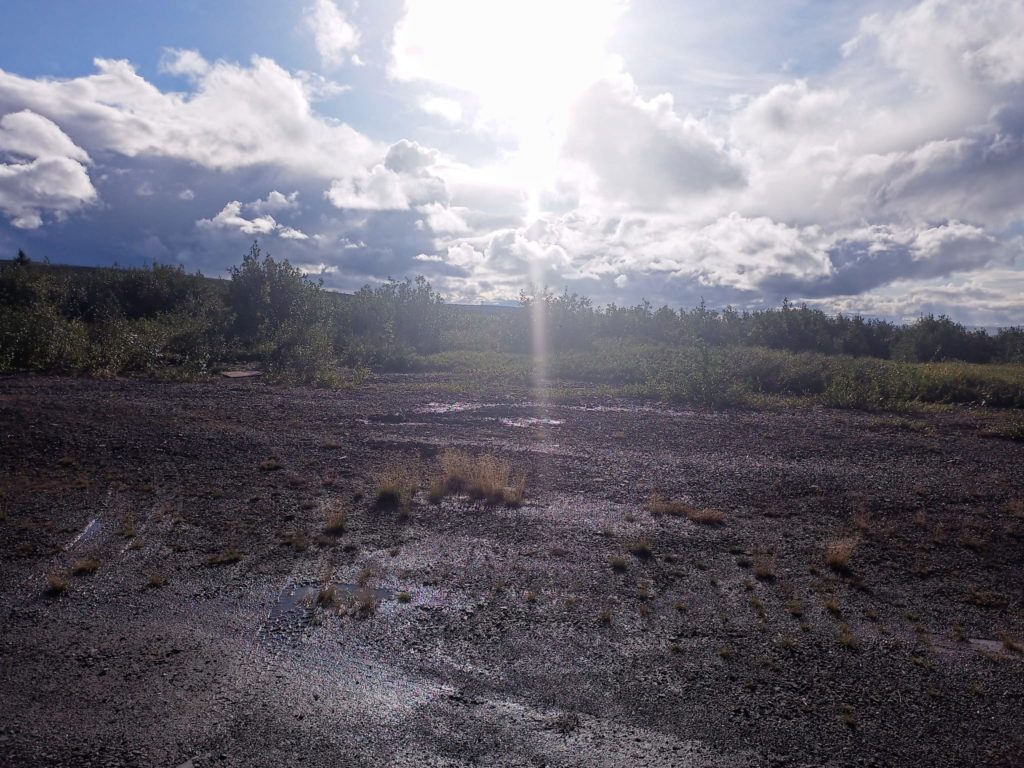
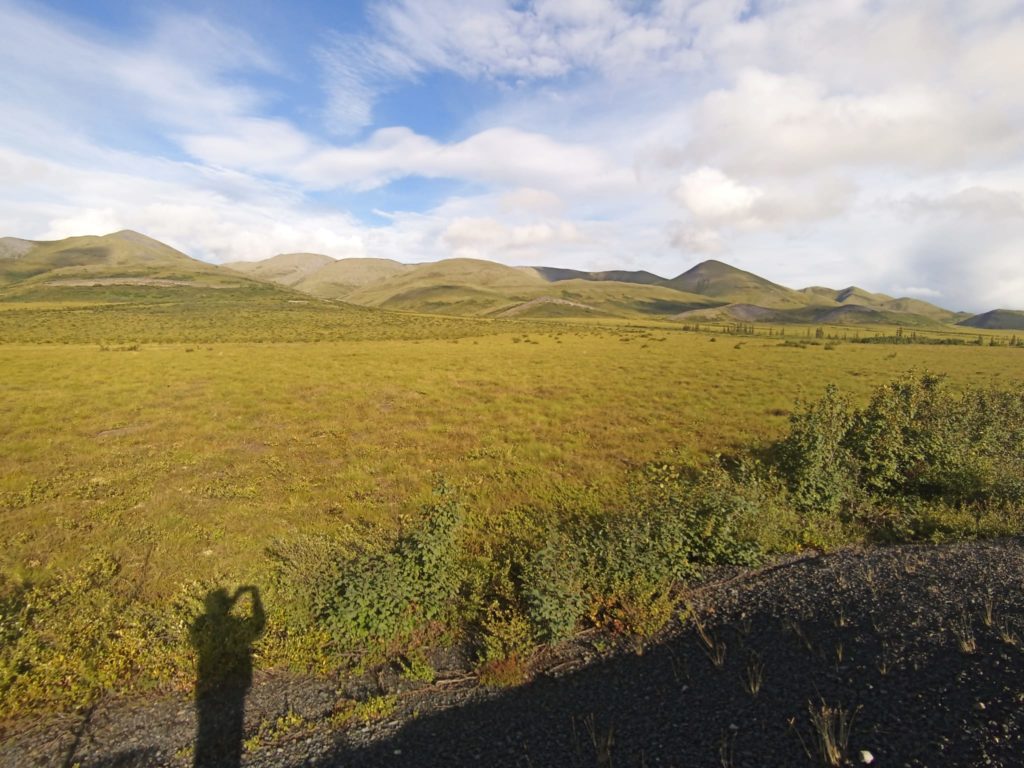


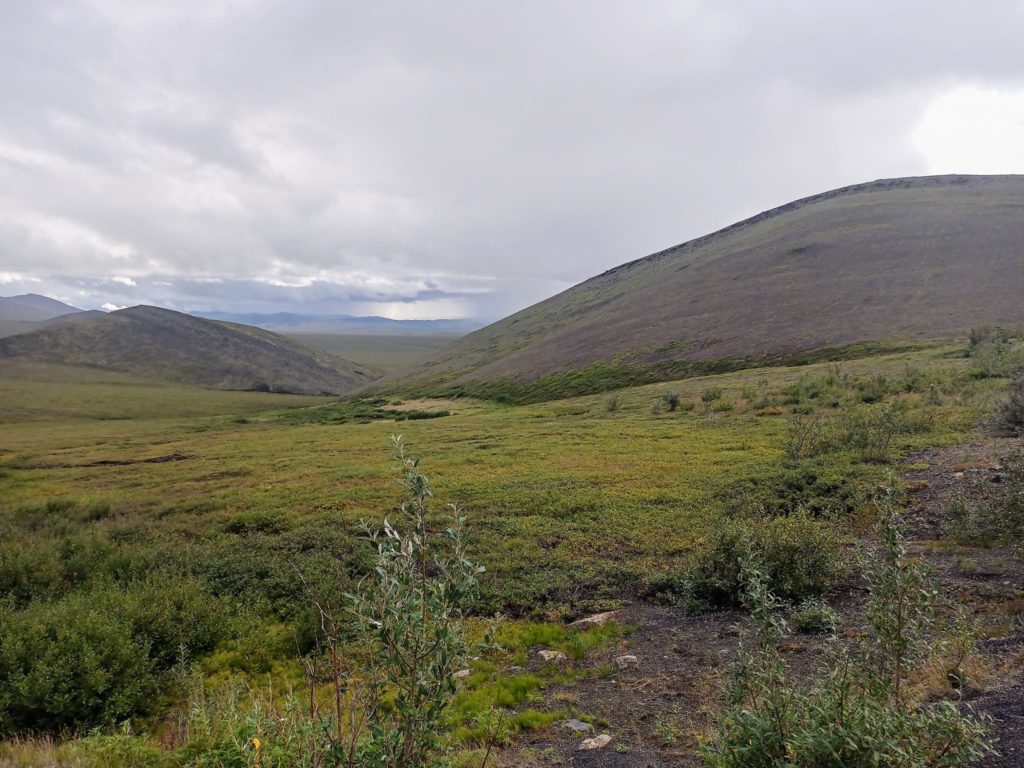

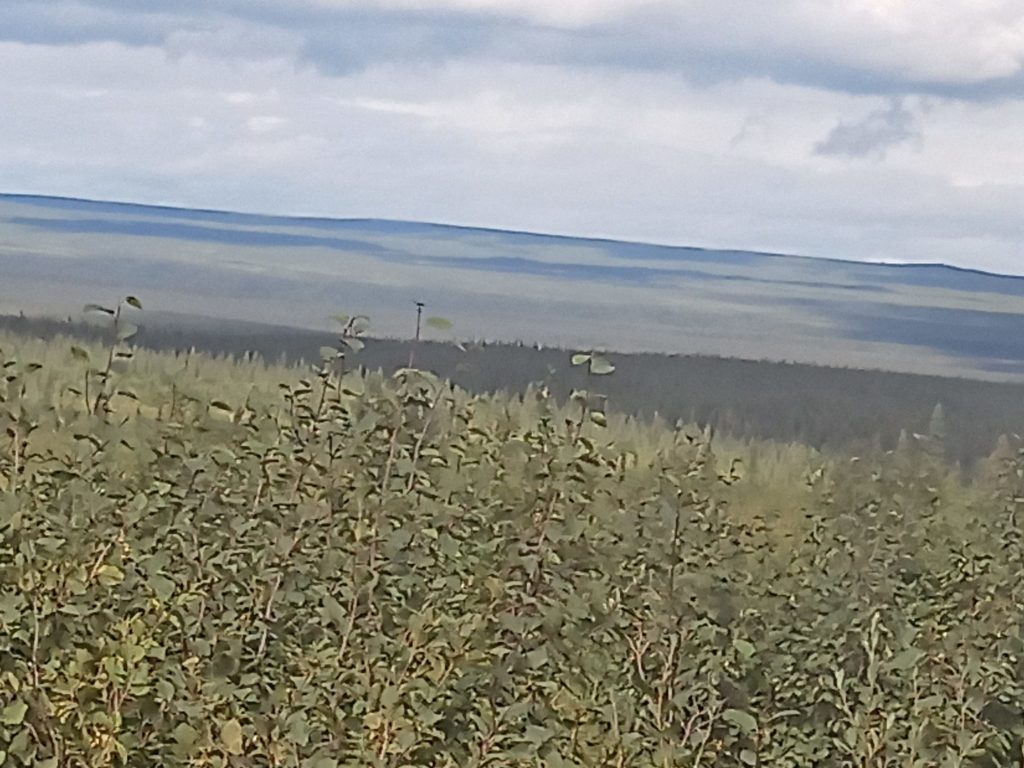
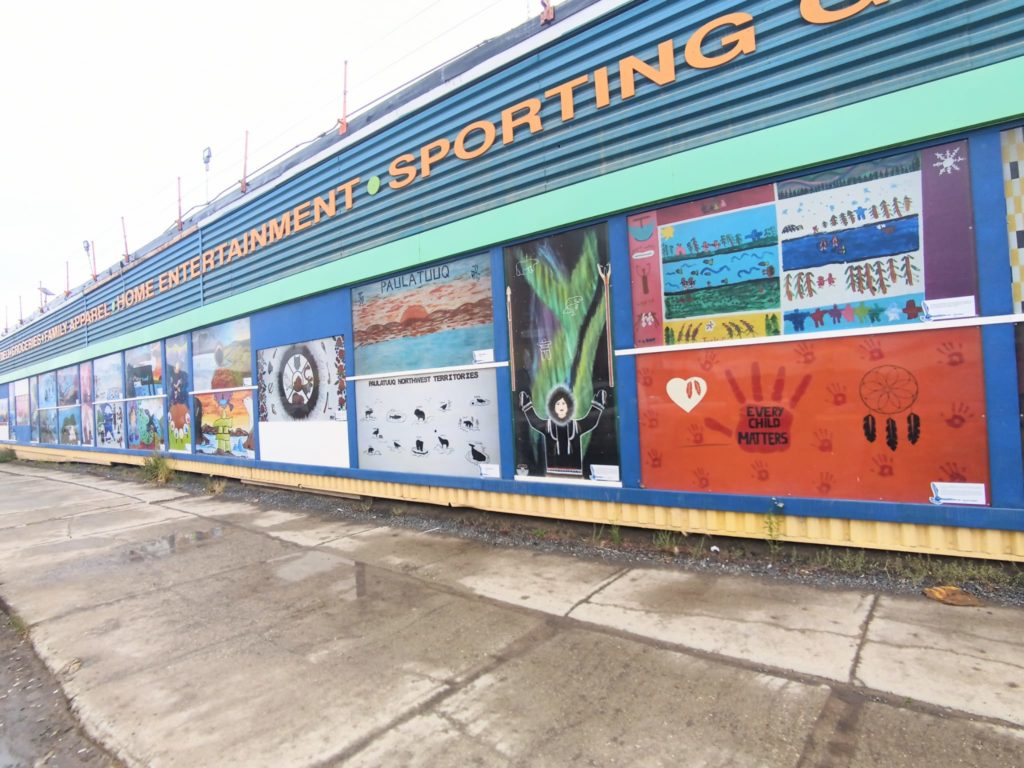
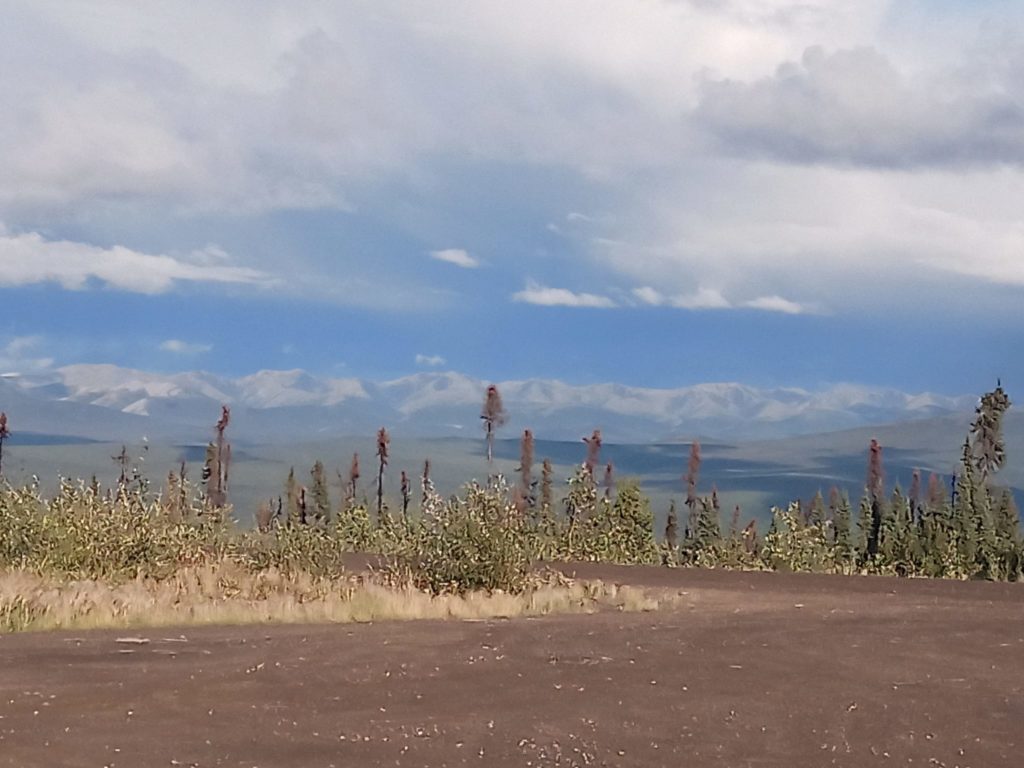
I love that you are meeting so many different people and learning hands-on about the lives of the locals.
What an interesting time and your trip is turning out to be such an adventure. Very great to hear you are learning so much along the way.
My and our wishes to both of you. Enjoy your trip. Thinking of you guys. Hope to do some adventures before get totally old.